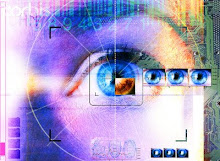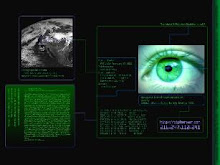Along the human being history, identity fraud and security counterfeiting have been a major concern and a challenging area for high security environments across the world. Thus,
to revolutionize this universe of security and identification which has been highly defied, Retinal Identification came into the world as an automatic method that provides true identification of the person by acquiring an internal body image, the retina of a willing person who must cooperate “in a way that would be difficult to counterfeit”. The human retina is stable from birth to death, making it the most accurate biometric to measure. The retina scan technology is not to be confused with the other ocular-based technology: the
iris recognitionThe retina is a very thin tissue composed of neutral cells that is located at the back of the eye. Because of the complexity of the capillaries' structure that supply the retina with blood, each person's retina is unique. The blood vessels in the retina form such a complex netwok that identical or Siamese twins do not even share a similar pattern. The replication of a retina has been an impossible operation up until now, and a dead person's retina would deteriorate so fast that it can not be used for identity counterfeiting.
A retinal scan is the biometric identifier used to map the unique patterns of a person's retina. The user looks through a small opening in the device at a small green light. The user must keep his head still and eye focused on the light for several seconds during which time the device will verify his identity. This process takes about 10 to 15 seconds total.

The retinal scan examines the blood vessel patterns of the retina, the nerve tissue lining the inside of the eye that is sensitive to light.
An infrared light source is used to illuminate the retina of the eye. The image of the enhanced blood vessel pattern of the retina is analyzed for characteristic points.
The uniqueness of the human retina and the impossibility of its replication made the retina scanning the most commmon technology relied on for high end access control security applications. The wide use of this technology in very high security environments such as nuclear research and weapons sites and communications control facilities is an incontrovertible evidence of its accuracy and invulnerability.
References:
http://www.time.com/
http://www.cse.msu.edu/
SANS.org http://www.sans.org/reading_room/whitepapers/authentication/1177.php



